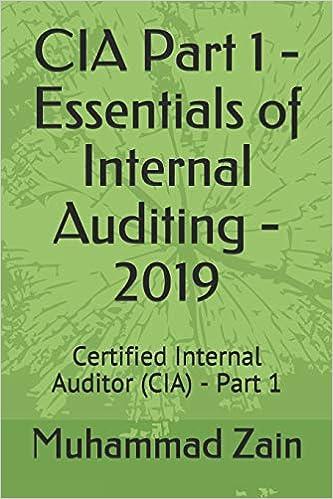Answered step by step
Verified Expert Solution
Question
1 Approved Answer
November 8 November 8 November 1 4 November 1 5 November 1 6 November 1 7 November 1 8 November 2 5 Elizabeth cashes in
November
November
November
November
November
November
November
November
Elizabeth cashes in her US Savings Bond and receives $ which she deposits in her personal bank account.
Elizabeth purchases $ of common stock in Taste Buds Kitchen.
Taste Buds Kitchen pays $ to purchase baking supplies, such as flour, sugar, butter, and chocolate chips Account: Supplies
Elizabeth starts to gather some equipment to take with her when teaching the cooking classes. She has an excellent topoftheline food processor and mixer that originally cost her $ Elizabeth decides to start using it only in her business. She estimates that the equipment is currently worth $ and she transfers the equipment into the business in exchange for additional common stock.
The company needs more cash to sustain its operations. Elizabeth decides to borrow from EG credit union, and the bank lends the company $ cash, in exchange for a twoyear, note payable. Interest and the principal are payable at maturity.
Taste Buds Kitchen pays $ for additional baking equipment.
Elizabeth schedules her first class for November She will receive $ on the date of the class.
Elizabeth books a second class for December for $ She receives a $ cash down payment, in advance.
November
November
November
November
December
December
December
December
December
December
December
Elizabeth's brother develops a website for Taste Buds Kitchen, Inc., and the company will use the site for advertising. He charges the company $ for his work, payable at the end of December. Because the website is expected to have a useful life of two years before upgrades are needed, it should be treated as an asset called Website
Taste Buds Kitchen pays $ for a oneyear insurance policy.
Elizabeth teaches a group of elementary school students how to make Santa Clause cookies. At the end of the class, Elizabeth leaves an invoice for $ with the school principal. The principal says that he will pass it along to the business office, and it will be paid sometime in December.
Elizabeth receives a $ invoice for use of her cell phone. She uses the cell phone exclusively for Taste Buds Kitchen business. The invoice is for services provided in November, and payment is due on December
December
Elizabeth hires an assistant at an hourly wage of $ per hour to help with cookie making and some administrative duties.
Elizabeth teaches the class that was booked on November The balance outstanding is received.
Taste Buds Kitchen receives a check for the amount due from the neighborhood school for the class given on November
Taste Buds Kitchen receives $ in advance from the local school board for five classes that the company will give during December and January.
Pays the cell phone invoice outstanding at November
Issues a check to Elizabeth's brother for the amount owed for the design of the website.
Receives a deposit of $ on a cookiebaking class scheduled for early January.
December Additional revenue during the month for cookiemaking classes amounts to $Elizabeth has not had time to account for each class individually $ in cash has been collected and $ is still outstanding. This is in addition to December and December transactions
December
Issues a check to Elizabeth's assistant for $ Her assistant worked approximately hours from the time in which she was hired until December
December
Taste Buds Kitchen, Inc. pays a dividend of $ to the common shareholder Elizabeth
YearEnd Adjusting Entries
As of December Taste Buds Kitchen's yearend, the following adjusting entry data are provided:
a A count reveals that $ of baking and marketing supplies were used.
b Depreciation is recorded on the baking equipment purchased in November. The baking equipment has a useful life of five years. Assume that months' worth of depreciation is required. Record depreciation expense with a debit to depreciation expense and credit accumulated depreciation.
c Interest on the note payable is accrued. Assume that months of interest accrued during November and December Round to the nearest dollar.

Step by Step Solution
There are 3 Steps involved in it
Step: 1

Get Instant Access to Expert-Tailored Solutions
See step-by-step solutions with expert insights and AI powered tools for academic success
Step: 2

Step: 3

Ace Your Homework with AI
Get the answers you need in no time with our AI-driven, step-by-step assistance
Get Started


